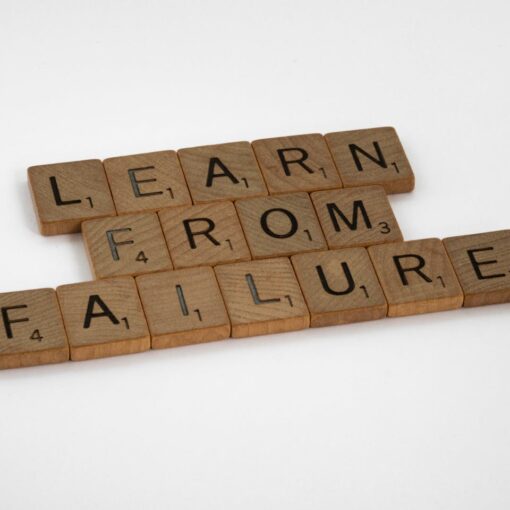Critical thinking is an essential skill in the workplace. It allows employees to analyze data, understand complex problems, and make informed decisions that benefit the organization. These skills enhance workplace efficiency and foster innovative solutions.

In a dynamic work environment, being able to think critically helps professionals navigate challenges effectively. How can employees apply critical thinking in their daily tasks to improve productivity and decision-making? This article will explore different approaches to integrate critical thinking into various aspects of work.
1) Identify Key Assumptions

In the workplace, recognizing key assumptions is vital. Employees often base decisions on underlying beliefs. Being aware of these can prevent errors.
Encourage team members to question initial thoughts. This can reveal hidden biases or incorrect ideas. For example, if a project fails, ask why certain steps were taken.
Another approach is to list all assumptions before starting a task. This makes it easier to see which ones might be flawed.
Teams can benefit from discussing assumptions together. Collaborative discussions bring out different perspectives. This can help in correcting false assumptions early on.
Reflect on past mistakes. Examining errors can shed light on faulty assumptions made earlier. Learning from these can improve future decision-making.
Finally, use data to validate assumptions. Facts and figures can either support or contradict initial beliefs. This strengthens the decision-making process.
By identifying and challenging assumptions, workplaces can foster a more accurate and efficient environment. For further reading on optimizing processes, visit how teams can improve their processes.
2) Evaluate Evidence Critically

To apply critical thinking in the workplace, it’s essential to evaluate evidence critically. This means looking at the information presented and deciding whether it is reliable and relevant.
Employees should start by checking the source of the data. Is the source credible? Is it backed by other reliable sources? Ensuring the reliability of the data is key.
Next, consider the context in which the evidence was gathered. Was it collected in a controlled environment or in a way that might introduce bias? Understanding the context helps in assessing the validity of the evidence.
Employees should also look for patterns and inconsistencies in the data. If the evidence has discrepancies, it could indicate flawed data collection or reporting. Recognizing these inconsistencies helps in making more informed decisions.
In addition, compare the evidence against other related information. Are there studies or reports that support or contradict the findings? This can help in forming a more balanced view of the evidence.
Lastly, be wary of emotional appeals or persuasive language in the presented evidence. Facts should speak for themselves without needing excessive emotional influence.
Using these steps can boost the ability to make sound, evidence-based decisions in the workplace. For a deeper dive into this topic, check out more ways to improve critical thinking skills.
3) Analyze Alternatives Thoroughly
When faced with a problem, it is important to examine all possible solutions. This means looking at each potential option and considering its pros and cons. By doing so, teams can ensure they choose the most effective solution.
First, gather as much information as possible about each alternative. This helps in understanding the possible outcomes and impacts of each option. They should consider past experiences, expert opinions, and data.
Next, compare the alternatives to each other. Teams should look for similarities and differences, strengths and weaknesses. This comparison helps highlight which options are most feasible.
It is also useful to involve team members from different departments. This diversity in perspectives can unveil aspects that might have been overlooked. Collaboration enriches the analysis process.
Lastly, think about the long-term effects of each solution. Teams should not only focus on the immediate benefits but also consider potential future implications. This approach minimizes risks and leads to better decision-making.
By analyzing alternatives thoroughly, teams make more informed and effective choices. This practice of critical thinking leads to better outcomes. For more tools on improving these skills, check critical thinking exercises for employees.
4) Develop Reasoned Arguments
Developing reasoned arguments is crucial in critical thinking at work.
Start by gathering all relevant facts before forming an opinion. Facts should be accurate and come from reliable sources.
Next, analyze the information logically. Break it down into smaller parts to understand each element.
Present your arguments clearly. Make sure each point flows logically to the next.
Use evidence to back up each point. Reliable data and examples strengthen your arguments.
Anticipate possible counterarguments. This helps prepare responses to objections.
Stay focused on the main point. Avoid getting sidetracked by unrelated details.
This method ensures arguments are sound, logical, and persuasive.
5) Reflect on Personal Biases
Reflecting on personal biases is key to effective critical thinking in the workplace. Biases can affect decisions and cloud judgments. Recognizing and addressing them can lead to better outcomes.
Everyone has unconscious biases. These are automatic and can influence how one acts and thinks without realizing it. Becoming aware of these biases is a vital first step.
Once biases are acknowledged, it’s important to take active steps to mitigate them. This can involve using tools like checklists or algorithms to keep focus on objective criteria. Harvard Business Review suggests this approach to stay centered on relevant factors without letting biases interfere.
Additionally, discussing biases openly in teams can make vulnerability less daunting and foster a culture of continuous improvement. Peer feedback can be a constructive way to identify blind spots.
Improved self-awareness contributes to both personal well-being and professional success. According to SHRM, individuals with high self-awareness are better equipped to handle ethical decisions. This level of insight can enhance leadership and teamwork significantly.
Understanding Critical Thinking
Critical thinking is crucial in the workplace for making informed decisions, solving problems efficiently, and improving processes. Knowing what critical thinking involves and the skills it requires can help employees perform better.
Definition and Importance
Critical thinking is the ability to analyze information and make decisions based on logic and reasoning. In the workplace, this means assessing situations, questioning assumptions, and arriving at well-thought-out conclusions. It is important because it enables employees to handle complex problems and unexpected challenges.
Employers value critical thinkers as they can improve productivity and drive innovation. These skills help teams avoid errors, enhance problem-solving abilities, and ensure better decision-making.
Skills Involved
Critical thinking involves several key skills, such as analysis, interpretation, inference, and evaluation. Analysis allows individuals to break down complex information into understandable parts. Interpretation involves understanding and explaining the meaning of data or events.
Inference is the process of drawing conclusions based on evidence and reasoning. Evaluation requires assessing arguments and identifying logical connections. These skills collectively enable employees to think deeply about issues and come up with effective solutions.
By honing these skills, employees can contribute significantly to their organizations’ success.
Implementing Critical Thinking Strategies
Implementing critical thinking in the workplace involves questioning assumptions and analyzing information effectively. These steps bolster decision-making and problem-solving skills among team members.
Questioning Assumptions
Critical thinking starts with challenging the status quo. Workers often accept established processes without question, which can lead to stagnation. Asking “why” can uncover inefficiencies.
Encouraging employees to voice doubts improves innovation. Managers should create a culture where questioning is seen as constructive. This helps identify areas needing improvement. Open discussions on company policies, project plans, and everyday practices stimulate critical thinking.
Regularly revisiting previously made decisions ensures they are still valid. By questioning assumptions, teams can adapt to changes and refine strategies. This method guards against outdated thinking and drives continuous improvement.
Analyzing Information
Analyzing information is key to critical thinking. Workers need to assess data thoroughly before making decisions. This involves verifying the credibility of sources and cross-checking facts.
Employees should be trained to distinguish between relevant and irrelevant information. This can be achieved through workshops focusing on data analysis. Critical thinkers prioritize information that impacts outcomes significantly.
Team members must also be encouraged to consider multiple perspectives. By evaluating information from different angles, they can make well-rounded decisions. Tools like SWOT analysis (Strengths, Weaknesses, Opportunities, Threats) are useful for systematic information review.
Applying these strategies ensures that decisions are based on solid evidence and comprehensive analysis.





